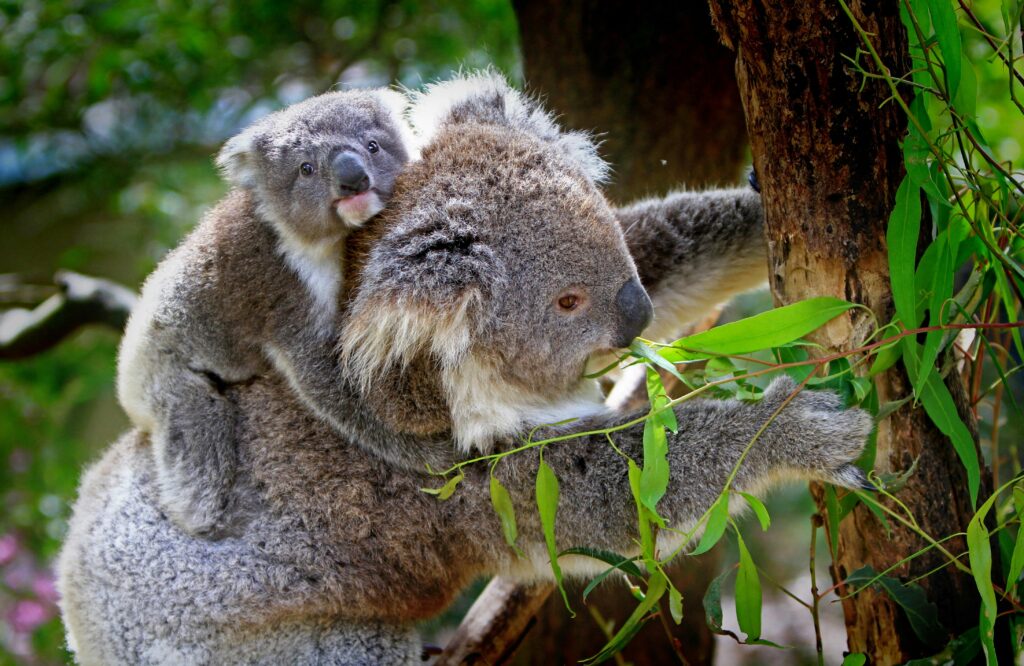Papua New Guinea

Baby Koala
Papua New Guinea isn’t a place you visit. It’s a world you enter. And once inside, you don’t lead — you follow. The paths here aren’t laid out. They’re whispered. Through rainforest vines, across volcanic slopes, up ridgelines wrapped in cloud. What lives here has stayed hidden longer than most of the world has known what “wildlife” means. And even now, it keeps its secrets close.
This isn’t a country of safaris or schedules. It’s a land of birdcalls no one’s named, frogs that glow under UV light, and mammals seen once — then never again. The wild here isn’t contained. It spills from the canopy, pulses in the rivers, and flickers between the leaves. Scientists call it one of the most biodiverse places on Earth. The locals have known that forever.
Forest Doesn’t Just Hold Life. It Generates It.
Species That Feel Imagined — But Aren’t
Culture and Wildlife: No Line Between Them
In Papua New Guinea, animals aren’t just part of the ecosystem — they’re embedded in identity. Feathers become headdresses. Calls become songs. Some birds are sacred. Some are forbidden. Many are known not by their Latin names, but by stories, rhythms, and what they do when the rains come. Conservation here can’t be separated from people. And that’s a strength — not a flaw.
The Wild Here Is Not on Display
You won’t see wildlife easily. The forest is too thick. The creatures too smart. But if you wait, and if you respect what you don’t understand, you might get lucky: a flash of iridescence, the quiet chewing of a marsupial, the slow blink of something watching from above. These moments aren’t staged. They’re earned — and unforgettable.
Final Thoughts
Papua New Guinea is not polished. It’s raw, unpredictable, and full of life that doesn’t care if you find it. But when you do — when the jungle breathes around you and something ancient steps out from the green — it hits you. This isn’t the edge of the wild. It’s the heart. And it’s beating loud.
This isn’t a country of safaris or schedules. It’s a land of birdcalls no one’s named, frogs that glow under UV light, and mammals seen once — then never again. The wild here isn’t contained. It spills from the canopy, pulses in the rivers, and flickers between the leaves. Scientists call it one of the most biodiverse places on Earth. The locals have known that forever.
Forest Doesn’t Just Hold Life. It Generates It.
- Bird’s Head Peninsula & Arfak Mountains: Dense rainforest and high-altitude ridges — home to birds-of-paradise that dance like flames, and tree kangaroos that climb like possums with shoulders.
- Mount Wilhelm & Highlands: Cooler air, woven stories, and cloud forest wrapped around fire-charred soil. Here, mammals hide, and tribes track them with signs you won’t find in any guidebook.
- Sepik Basin: Rivers that feel alive, brimming with crocs, fish, fruit bats, and legends. You float, you wait, you watch. The jungle speaks. Quietly, but with power.
- New Britain & New Ireland Islands: Isolated, volcanic, wild. Micro-endemics live here — lizards the size of pencils, orchids that bloom for a day, rodents that appear once per decade.
- Huon Peninsula: One of the most significant untouched tropical forests on Earth — and still largely unexplored, by both science and tourism. A frontier in every sense.
Species That Feel Imagined — But Aren’t
- King of Saxony Bird-of-Paradise: A living jewel with streaming head-plumes like antennae, flicking through misty trees in impossible elegance.
- Tree Kangaroo: Wallaby face, sloth posture, monkey motion. Found in trees where marsupials don’t usually belong — but here, they do.
- Long-beaked Echidna: Egg-laying, spine-covered, and heartbreakingly rare. Spotted mostly by Indigenous trackers, and still largely a mystery.
- Victoria Crowned Pigeon: Blue, regal, and too elegant for the forest floor — unless you’re in PNG, where it struts like it owns the place.
- Cuscus: A slow-moving, big-eyed marsupial that looks like a plush toy, but with wild instincts you’ll never tame.
Culture and Wildlife: No Line Between Them
In Papua New Guinea, animals aren’t just part of the ecosystem — they’re embedded in identity. Feathers become headdresses. Calls become songs. Some birds are sacred. Some are forbidden. Many are known not by their Latin names, but by stories, rhythms, and what they do when the rains come. Conservation here can’t be separated from people. And that’s a strength — not a flaw.
The Wild Here Is Not on Display
You won’t see wildlife easily. The forest is too thick. The creatures too smart. But if you wait, and if you respect what you don’t understand, you might get lucky: a flash of iridescence, the quiet chewing of a marsupial, the slow blink of something watching from above. These moments aren’t staged. They’re earned — and unforgettable.
Final Thoughts
Papua New Guinea is not polished. It’s raw, unpredictable, and full of life that doesn’t care if you find it. But when you do — when the jungle breathes around you and something ancient steps out from the green — it hits you. This isn’t the edge of the wild. It’s the heart. And it’s beating loud.
